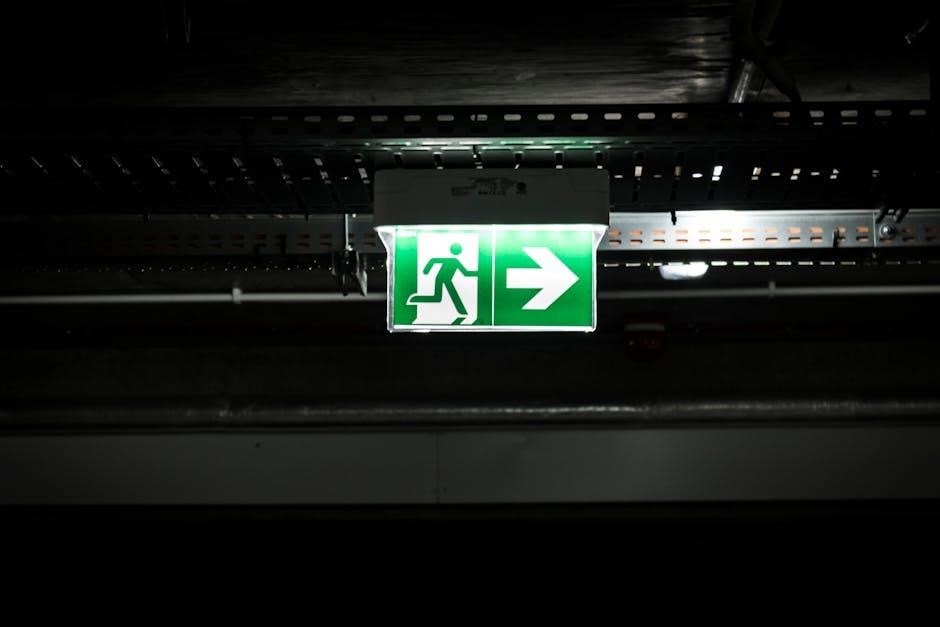Gauging is the process of measuring liquids in storage tanks to determine volume and mass‚ typically including level‚ temperature‚ and pressure measurements. This guide explores its technologies‚ standards‚ and applications across industries to ensure quality and accuracy in various fields.
1.1 Definition and Purpose of Gauging
Gauging involves measuring‚ estimating‚ or evaluating the extent‚ amount‚ or size of something. It is a critical process for assessing physical dimensions‚ ensuring product conformance‚ and maintaining quality standards. The purpose of gauging is to provide accurate measurements‚ enabling informed decisions in manufacturing‚ quality control‚ and process optimization. By mastering gauging techniques‚ professionals can enhance precision‚ reduce errors‚ and improve overall efficiency across various industries.
1.2 Importance of Accurate Gauging in Various Industries
Accurate gauging is essential across industries‚ ensuring product quality‚ safety‚ and efficiency. In manufacturing‚ precise measurements prevent defects and reduce waste. In oil and gas‚ gauging liquids ensures safe storage and transport. Aerospace relies on gauging for component accuracy‚ while healthcare uses it for medical device calibration. Without accurate gauging‚ industries risk defects‚ safety hazards‚ and operational inefficiencies. It underpins quality control‚ process optimization‚ and compliance with standards‚ making it a cornerstone of modern industrial practices.

Types of Gauges
Gauges are categorized into mechanical‚ digital‚ attribute‚ and variable types. Mechanical gauges use physical measurements‚ while digital gauges provide precise data. Attribute gauges check pass/fail conditions‚ and variable gauges measure specific dimensions.
2.1 Mechanical Gauges
Mechanical gauges rely on physical mechanisms to measure dimensions or characteristics of objects; Tools like micrometers‚ calipers‚ and dial indicators are common examples. They provide precise readings through mechanical movement or spring-loaded probes. Mechanical gauges are widely used in manufacturing and quality assurance for inspecting parts. While they offer high accuracy‚ they require skill to operate and are sensitive to wear and tear. Proper calibration and maintenance are essential to ensure reliable measurements.
2.2 Digital Gauges
Digital gauges offer advanced measurement solutions with high precision and ease of use. They utilize electronic sensors to convert physical measurements into digital data‚ displayed on an LCD screen. These gauges often feature data logging‚ Bluetooth connectivity‚ and compatibility with software for analysis. Digital gauges are ideal for complex inspections and automation‚ reducing human error; They are commonly used in industries requiring detailed records and real-time monitoring‚ ensuring accuracy and efficiency in quality control processes.
2.3 Attribute Gauges
Attribute gauges‚ also known as Go/NoGo gauges‚ are designed to check whether a part conforms to specified tolerances. They consist of two parts: the “Go” gauge‚ which must fit into the part‚ and the “NoGo” gauge‚ which must not fit. These gauges provide a simple pass/fail result‚ ensuring functional conformance without precise measurements. They are widely used in manufacturing for quick inspections and are particularly effective for verifying critical dimensions that affect assembly or performance. Attribute gauges are cost-effective and minimize the need for complex measurements.
2.4 Variable Gauges
Variable gauges provide precise measurements to determine if a dimension is within tolerance and by how much. They are used for detailed inspections and process control‚ offering quantitative data. These gauges‚ such as micrometers and calipers‚ can be influenced by operator skill‚ requiring proper training for accuracy. While simple tools like micrometers are common‚ custom-designed variable gauges can measure multiple dimensions‚ making them versatile but often more complex and costly. They are essential for industries needing exact measurements to ensure product quality and compliance.

Selecting the Right Gage
Selecting the right gage involves understanding your measurement needs‚ tolerance requirements‚ and operational constraints. Proper selection ensures accuracy‚ efficiency‚ and reliability in industrial and quality control processes.
3.1 Understanding Your Measurement Requirements
Understanding your measurement requirements involves defining the type of measurement needed‚ such as linear‚ angular‚ or dimensional. It also includes identifying the desired accuracy‚ precision‚ and tolerance levels. Additionally‚ considering the operating environment‚ like temperature and humidity‚ is crucial. Knowing whether you need absolute or comparative measurements helps in choosing the right gage. This step ensures that the selected tool aligns with the specific demands of your application‚ optimizing both performance and reliability.
3.2 Factors Influencing Gage Selection
Key factors influencing gage selection include measurement precision‚ tolerance levels‚ and the type of measurement required (linear‚ angular‚ or dimensional). Environmental conditions‚ such as temperature and humidity‚ also play a role. The need for attribute or variable measurement‚ operator influence‚ and budget considerations are critical. Additionally‚ the complexity of the gage‚ whether it is portable or fixed‚ and its ease of use must be evaluated to ensure optimal performance and accuracy for the specific application.
3.3 Common Mistakes to Avoid in Gage Selection
Common mistakes in gage selection include neglecting operator influence on measurements and ignoring environmental factors like temperature and humidity. Overlooking the distinction between attribute and variable gauges can lead to incorrect choices. Additionally‚ failing to consider tolerance levels and the need for calibration often results in inaccurate measurements. Ensuring proper training and understanding the application requirements are crucial to avoid these pitfalls and ensure precise‚ reliable results in quality control and production processes.

Calibration and Maintenance
Regular calibration and maintenance are essential for ensuring accuracy and reliability in gauging. Neglecting these practices can lead to measurement errors and equipment deterioration over time.
4.1 Why Calibration is Crucial
Calibration is vital to ensure measurement accuracy and reliability in gauging. It verifies that tools and instruments provide precise readings‚ maintaining compliance with industry standards and preventing errors. Proper calibration enhances equipment performance‚ reduces variability‚ and ensures product quality. Without calibration‚ measurements can drift‚ leading to incorrect assessments and potential failures. Regular calibration safeguards against these risks‚ ensuring consistency and trustworthiness in gauging processes across industries.
4.2 Best Practices for Gage Maintenance
Regular maintenance of gauges is essential to uphold their accuracy and longevity. This includes cleaning‚ storing in controlled environments‚ and protecting from damage. Operators should adhere to manufacturer guidelines‚ perform routine checks‚ and replace worn parts promptly. Proper care ensures gauges remain reliable‚ reducing measurement errors and extending their lifespan. Consistent maintenance practices also minimize downtime and support overall quality control processes in industrial settings.

Gauging vs. Measuring
Gauging checks if something meets specific limits‚ while measuring determines exact dimensions or values. Gauging uses tools like Go/NoGo gauges for pass/fail checks‚ whereas measuring employs micrometers or calipers for precise data collection.
5.1 Differences Between Gauging and Measuring
Gauging involves checking if a product meets specific limits or tolerances‚ often using tools like Go/NoGo gauges‚ while measuring determines exact dimensions or values. Gauging provides a pass/fail result‚ ensuring functional conformity‚ whereas measuring offers precise data for analysis. Gauging is typically faster and requires less operator skill‚ while measuring demands accuracy and detailed documentation. Understanding these distinctions is key to selecting the right method for quality control‚ process monitoring‚ or design verification in various industries.
5.2 When to Use Each Method
Gauging is ideal for quick pass/fail assessments to verify if parts meet specified tolerances‚ ensuring functional conformity. It is best used in production settings where rapid decisions are needed. Measuring‚ however‚ is suited for detailed dimensional analysis‚ such as in design verification or when precise data is required for process control. Use gauging for simple go/no-go checks and measuring for exact measurements‚ ensuring the method aligns with the specific requirements of your application or industry standards.

The Role of Technology in Gauging
Technology enhances gauging processes through digital tools and automation‚ improving accuracy‚ consistency‚ and efficiency. Advanced sensors and software enable precise measurements‚ reducing human error and optimizing quality control across industries.
6.1 Digital Tools and Software
Digital tools and software revolutionize gauging by enhancing precision and efficiency. Advanced systems like digital calipers‚ dial indicators‚ and specialized software enable real-time data collection‚ analysis‚ and reporting. These tools integrate seamlessly with automation‚ reducing human error and improving consistency. Cloud-based platforms facilitate data management‚ while AI-driven systems offer predictive maintenance and adaptive measurements. Digital solutions empower industries to optimize quality control‚ streamline processes‚ and achieve superior accuracy in gauging applications.
6.2 Automation in Gauging Processes
Automation in gauging processes enhances efficiency and accuracy by minimizing human intervention. Robotic systems and machine learning algorithms optimize measurements‚ reducing errors and improving consistency. Automated gauging integrates with CMMs and optical systems‚ enabling real-time data collection and analysis. This technology streamlines quality control‚ accelerates production‚ and supports data-driven decision-making. Automated solutions adapt to complex geometries and large-scale inspections‚ ensuring precise and reliable outcomes across industries.

Common Gauging Challenges
Common gauging challenges include operator influence‚ tolerance deviations‚ and maintaining measurement consistency. These issues can affect accuracy and require precise calibration and operator training to mitigate effectively.
7.1 Operator Influence on Measurements
Operator influence on measurements is a significant challenge‚ as human factors like technique variability and environmental conditions can impact accuracy. For instance‚ incorrect handling of micrometers or misalignment during inspections can lead to deviations. Even with digital tools‚ operator interpretation of readings or improper zeroing can introduce errors. Consistent training‚ standardized procedures‚ and regular calibration are essential to minimize these effects. Addressing these issues ensures reliable and repeatable results in gauging processes across various industries.
7.2 Dealing with Tolerances and Deviations
Understanding and managing tolerances and deviations is critical in gauging to ensure quality and consistency. Tolerances define acceptable ranges for measurements‚ while deviations occur when results fall outside these limits. Causes include operator error‚ worn tools‚ and environmental factors. Addressing these issues requires precise calibration‚ operator training‚ and robust quality control processes. By implementing statistical methods and regular checks‚ deviations can be minimized‚ ensuring compliance with standards and maintaining product reliability.
![]()
Gauging in Quality Control
Gauging ensures product quality by measuring physical characteristics against predefined standards‚ helping to maintain consistency and reliability in manufacturing processes across various industries.
8.1 Ensuring Product Conformance
Gauging plays a critical role in ensuring products meet specifications by accurately measuring physical characteristics. Attribute gauges confirm functional fit‚ while variable gauges provide precise measurements for dimensional accuracy. This process helps identify deviations‚ ensuring compliance with quality standards. By integrating gauging into quality control‚ manufacturers can maintain consistency‚ reduce defects‚ and improve customer satisfaction. Regular calibration and operator training further enhance reliability‚ making gauging an essential tool for achieving conformance in production processes across various industries.
8.2 Statistical Process Control in Gauging
Statistical Process Control (SPC) in gauging involves monitoring measurements to ensure consistency and reduce variability. By analyzing data trends‚ manufacturers can identify deviations early‚ preventing defects. Tools like control charts track measurements‚ enabling real-time adjustments. SPC integrates seamlessly with gauging systems‚ providing insights into process stability and capability. This approach minimizes waste‚ improves quality‚ and enhances customer satisfaction by ensuring products consistently meet specifications. Regular SPC analysis is essential for maintaining precision and reliability in gauging processes across industries.
Training and Skill Development
Proper training is essential for mastering gauging skills‚ ensuring accurate measurements‚ and understanding tool usage. Continuous practice and self-awareness enhance expertise in quality control processes.
9.1 Importance of Proper Training
Proper training is crucial for mastering gauging techniques‚ ensuring accurate measurements‚ and understanding tool usage. It reduces errors‚ enhances consistency‚ and improves overall quality control processes. Training also fosters a better understanding of measurement requirements and helps operators interpret data effectively. By equipping individuals with the necessary skills‚ training ensures compliance with industry standards and promotes efficiency in various industrial applications. Continuous learning and practice are essential for maintaining expertise and adapting to new technologies in the field of gauging.
9.2 Tips for Mastering Gauging Skills
Mastering gauging skills requires consistent practice‚ attention to detail‚ and a thorough understanding of measurement tools. Start by calibrating your tools regularly to ensure accuracy. Focus on understanding your specific measurement requirements to choose the right gage. Minimize operator influence by following standardized techniques. Begin with basic tools like micrometers and gradually progress to complex gauges. Leverage digital tools and software for precise measurements and data management. Continuous practice and staying updated with new technologies will enhance your expertise in gauging.

Case Studies and Real-World Applications
Real-world applications of gauging include precision manufacturing‚ oil tank measurement‚ and quality control. Case studies highlight how gauging technologies ensure accuracy‚ efficiency‚ and compliance in various industries.
10.1 Success Stories in Gauging
Success stories in gauging highlight its transformative impact across industries. In oil and gas‚ advanced tank gauging systems improved inventory accuracy and reduced operational costs. Aerospace manufacturers rely on precision gauges to ensure aircraft safety‚ while automotive firms use gauging tools to maintain tight tolerances. Digital gauges have streamlined quality control in electronics‚ enabling faster detection of defects. These real-world applications demonstrate how effective gauging enhances efficiency‚ reduces errors‚ and drives innovation in manufacturing and beyond.
10.2 Lessons Learned from Common Pitfalls
Common pitfalls in gauging include improper calibration‚ lack of maintenance‚ and operator error. Neglecting environmental factors like temperature and vibration can lead to inaccurate measurements. Overreliance on mechanical gauges without verification can result in costly rework. Additionally‚ ignoring manufacturer guidelines and failing to train personnel exacerbate errors. These lessons emphasize the importance of regular calibration‚ proper tool selection‚ and adherence to established standards to ensure accuracy and compliance in gauging processes.

Future Trends in Gauging
Emerging technologies like digital tools and automation are transforming gauging‚ enabling faster and more accurate measurements. AI and non-contact optical systems are expected to revolutionize the field.
11.1 Emerging Technologies
Emerging technologies are revolutionizing gauging‚ with advancements like AI-powered sensors‚ machine learning algorithms‚ and IoT-enabled devices. These innovations enhance precision‚ speed‚ and data analysis‚ enabling real-time monitoring and predictive maintenance. Optical and laser-based systems are improving non-contact measurements‚ reducing human error. Additionally‚ augmented reality and blockchain are being integrated to enhance visualization and data security. These technologies are reshaping the future of gauging‚ making it more efficient and reliable across industries.
11.2 Industry Predictions and Innovations
Industry experts predict a surge in smart gauges and IoT-integrated solutions‚ enabling real-time data analysis and enhanced process control. Innovations like AI-driven predictive maintenance and customizable gauges for specific applications are expected to dominate. Sustainable practices and eco-friendly gauging technologies are also emerging. These advancements aim to improve efficiency‚ reduce costs‚ and support data-driven decision-making across industries‚ ensuring gauging remains a critical tool in modern manufacturing and quality control.
Gauging is essential for accuracy and efficiency across industries‚ ensuring product quality and compliance. By leveraging technology and skilled operators‚ gauging continues to evolve‚ driving innovation and excellence.
12.1 Recap of Key Points
Gauging is a critical process for ensuring accuracy‚ quality‚ and compliance across industries. It involves measuring liquids‚ materials‚ or dimensions to determine conformance to standards. Key aspects include understanding measurement requirements‚ selecting the right tools‚ and maintaining calibration. Proper training and skill development are essential for operators to minimize errors. Technology plays a significant role in advancing gauging processes‚ while challenges like operator influence and tolerance management require careful handling. Effective gauging ensures product reliability and operational efficiency.
12.2 Final Thoughts on Effective Gauging
Gauging is a fundamental process for ensuring accuracy‚ efficiency‚ and compliance across industries. By balancing traditional methods with modern tools‚ professionals can achieve precise measurements and maintain quality standards. Continuous learning and adaptation are key to mastering gauging skills. Effective gauging not only enhances operational success but also drives innovation‚ making it an indispensable practice in today’s industrial landscape. Embrace the tools‚ techniques‚ and best practices outlined in this guide to elevate your expertise and contribute to excellence in your field.
